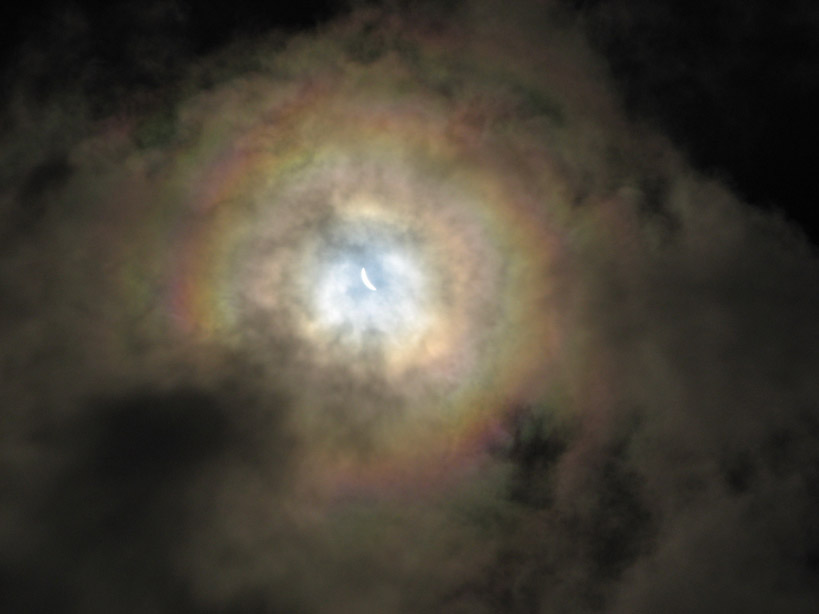Difference between revisions of "August 3, 2010"
| Line 3: | Line 3: | ||
<!-- ws:start:WikiTextHeadingRule:1:<h1> --> | <!-- ws:start:WikiTextHeadingRule:1:<h1> --> | ||
<!-- ws:start:WikiTextLocalImageRule:16:<img src="/file/view/LPOD-Aug3-10.jpg/154951265/LPOD-Aug3-10.jpg" alt="" title="" /> -->[[File:LPOD-Aug3-10.jpg|LPOD-Aug3-10.jpg]]<!-- ws:end:WikiTextLocalImageRule:16 --><br /> | <!-- ws:start:WikiTextLocalImageRule:16:<img src="/file/view/LPOD-Aug3-10.jpg/154951265/LPOD-Aug3-10.jpg" alt="" title="" /> -->[[File:LPOD-Aug3-10.jpg|LPOD-Aug3-10.jpg]]<!-- ws:end:WikiTextLocalImageRule:16 --><br /> | ||
| − | <em>image by [mailto:msergio58@yahoo.com.br | + | <em>image by [mailto:msergio58@yahoo.com.br Mario Freitas], Easter Island</em><br /> |
<br /> | <br /> | ||
Is the Moon visible in the above picture? It depends on how we understand "visibility". In the center of the image the white crescent depicts a tiny portion of the solar photosphere, photographed just 38 seconds after third contact, during the total solar eclipse of July 11, 2010, in Easter Island. We could say that the continuously changing shape of the crescent allows the observer to "see" the Moon. In the shot time the plasma corona – the outer atmosphere of the Sun – is no longer visible. But coincidently, another "corona" was revealed just after third contact, clearly imaged in the picture as a sequence of concentric, colored rings. It was formed by diffraction of white light on clouds of Earth’s atmosphere, which formation process involved same-sized droplets: the optical phenomenon has nothing to do with the alignment of celestial bodies. Despite the highly contrasted colors of the rings, they were overlooked by many eclipse chasers in the same observing suite, probably because in such moments, clouds are not their focus of attention!<br /> | Is the Moon visible in the above picture? It depends on how we understand "visibility". In the center of the image the white crescent depicts a tiny portion of the solar photosphere, photographed just 38 seconds after third contact, during the total solar eclipse of July 11, 2010, in Easter Island. We could say that the continuously changing shape of the crescent allows the observer to "see" the Moon. In the shot time the plasma corona – the outer atmosphere of the Sun – is no longer visible. But coincidently, another "corona" was revealed just after third contact, clearly imaged in the picture as a sequence of concentric, colored rings. It was formed by diffraction of white light on clouds of Earth’s atmosphere, which formation process involved same-sized droplets: the optical phenomenon has nothing to do with the alignment of celestial bodies. Despite the highly contrasted colors of the rings, they were overlooked by many eclipse chasers in the same observing suite, probably because in such moments, clouds are not their focus of attention!<br /> | ||
<br /> | <br /> | ||
| − | <em>[mailto:msergio58@yahoo.com.br | + | <em>[mailto:msergio58@yahoo.com.br Mario Freitas]</em><br /> |
<br /> | <br /> | ||
<strong>Technical Details</strong><br /> | <strong>Technical Details</strong><br /> | ||
| Line 13: | Line 13: | ||
<br /> | <br /> | ||
<strong>Related Links</strong><br /> | <strong>Related Links</strong><br /> | ||
| − | July 11, 2010 [http://en.wikipedia.org/wiki/Solar_eclipse_of_July_11,_2010 | + | July 11, 2010 [http://en.wikipedia.org/wiki/Solar_eclipse_of_July_11,_2010 eclipse]<br /> |
<br /> | <br /> | ||
<hr /> | <hr /> | ||
| − | <div>You can support LPOD when you buy any book from Amazon thru [http://www.lpod.org/?page_id=591 | + | <div>You can support LPOD when you buy any book from Amazon thru [http://www.lpod.org/?page_id=591 LPOD!]<br /> |
</div> | </div> | ||
---- | ---- | ||
===COMMENTS?=== | ===COMMENTS?=== | ||
| − | + | Register, and click on the <b>Discussion</b> tab at the top of the page. | |
Revision as of 17:23, 11 January 2015
Undesired, but Pretty Atmospheric Optics

image by Mario Freitas, Easter Island
Is the Moon visible in the above picture? It depends on how we understand "visibility". In the center of the image the white crescent depicts a tiny portion of the solar photosphere, photographed just 38 seconds after third contact, during the total solar eclipse of July 11, 2010, in Easter Island. We could say that the continuously changing shape of the crescent allows the observer to "see" the Moon. In the shot time the plasma corona – the outer atmosphere of the Sun – is no longer visible. But coincidently, another "corona" was revealed just after third contact, clearly imaged in the picture as a sequence of concentric, colored rings. It was formed by diffraction of white light on clouds of Earth’s atmosphere, which formation process involved same-sized droplets: the optical phenomenon has nothing to do with the alignment of celestial bodies. Despite the highly contrasted colors of the rings, they were overlooked by many eclipse chasers in the same observing suite, probably because in such moments, clouds are not their focus of attention!
Mario Freitas
Technical Details
July 11, 2010. Camera Canon A 710, focal length 30.8mm; shutter speed 1/250; aperture value 4.5; ISO Auto.
Related Links
July 11, 2010 eclipse
COMMENTS?
Register, and click on the Discussion tab at the top of the page.



